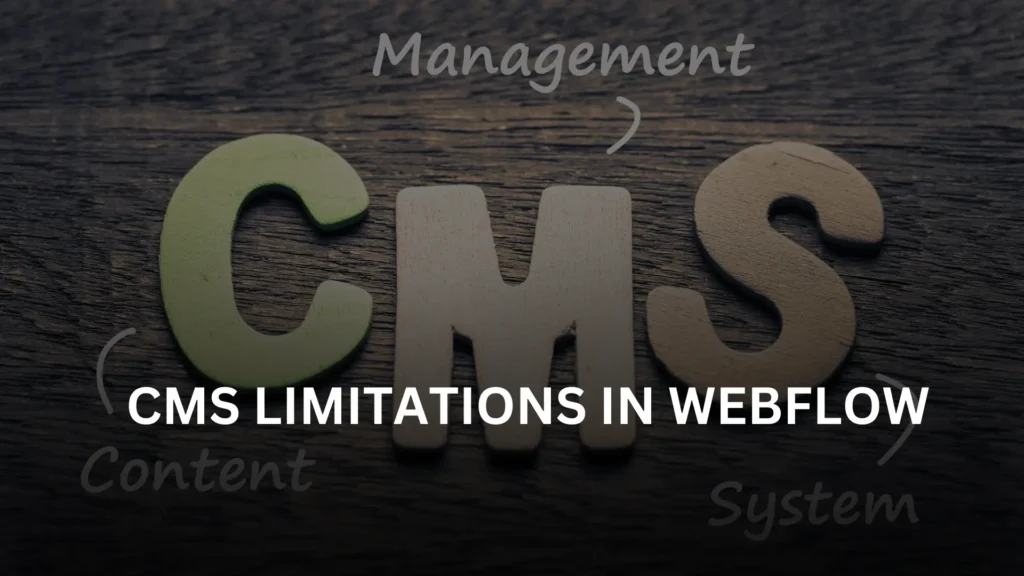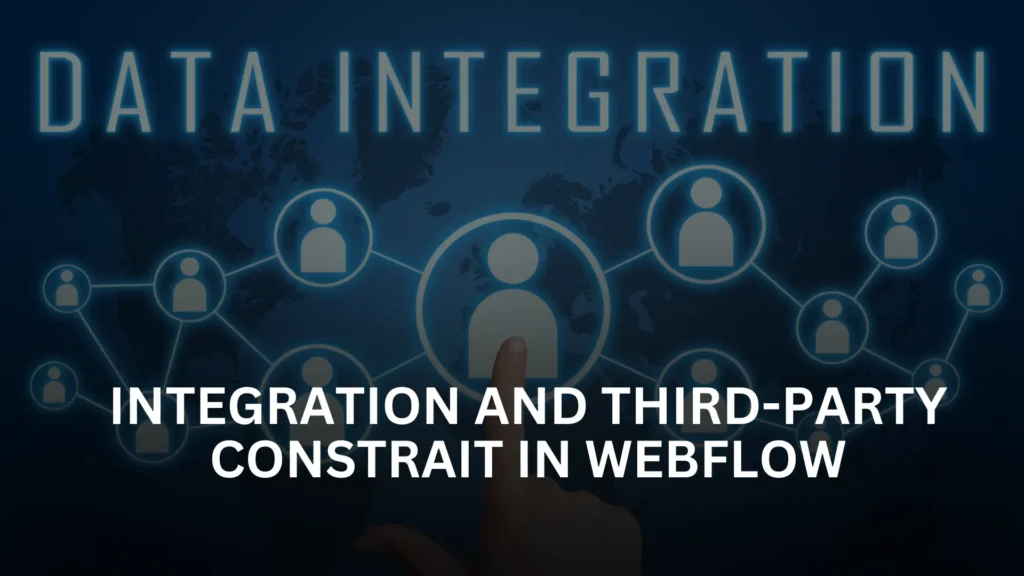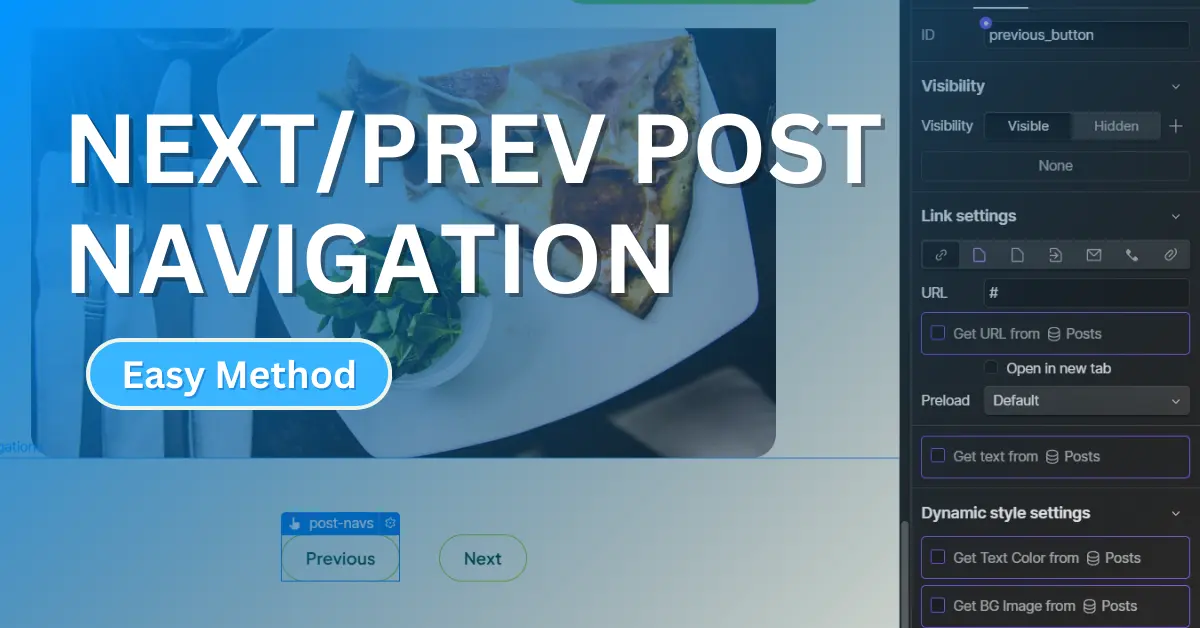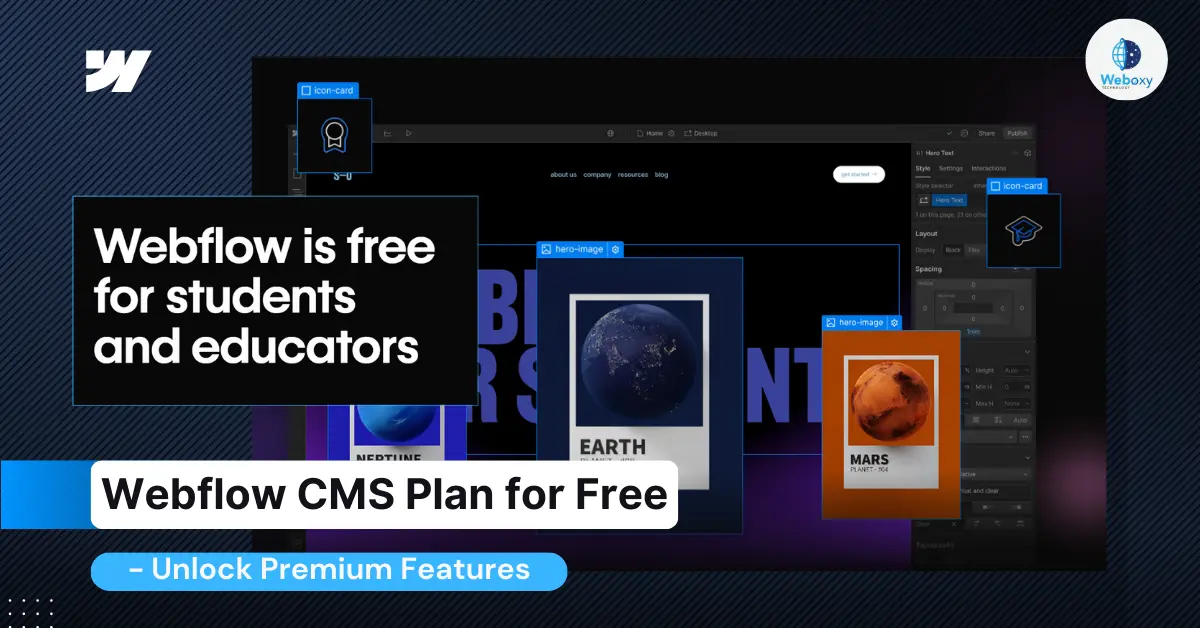Introduction
Webflow has revolutionized the way websites are built, offering a powerful platform that bridges the gap between design and development. With its intuitive drag-and-drop interface, Webflow empowers designers and developers alike to create visually stunning and responsive websites without the need for extensive coding knowledge.
The platform provides a wide range of tools and features, including dynamic content management, seamless e-commerce integration, and hosting solutions, making it a versatile choice for many users.
However, like any platform, Webflow has its limitations. Understanding these limitations is crucial for making informed decisions about whether Webflow is the right fit for your project.
While Webflow’s capabilities are vast, being aware of its constraints can help you avoid potential roadblocks and ensure that your website development process is as smooth as possible.
Top 5 Webflow Limitations
This guide will explore the key limitations of Webflow, offering insights that will help you navigate the platform effectively and make the most of its strengths while mitigating its weaknesses.
Design and Customization Constraints

1. Limited Control Over HTML and CSS
Webflow is often marketed as a “no-code” solution, promising the ability to build complex websites without touching a single line of code. This appeal has attracted many non-developers eager to create professional websites with ease. However, as you delve deeper into Webflow, it becomes evident that the “no-code” label is more of a marketing strategy than a reality.
One of the key areas where Webflow’s limitations become apparent is in its control over HTML and CSS. While Webflow does provide a robust visual interface for styling and structuring your site, it falls short in offering complete control over the finer details of HTML and CSS.
For instance, advanced CSS features such as pseudo-classes like :has, :not, :is, and others are not natively supported. Applying styles to form elements is not fully customizable within Webflow’s design interface, and creating custom bullets and list styling often requires the intervention of developers.
Similarly, animations using @keyframes require custom code, which contradicts the no-code promise. These limitations can be frustrating for developers who are used to having full control over their code.
2. Simple Yet Advanced Elements
While Webflow offers an intuitive platform for building websites, some seemingly basic yet advanced elements still require more than the platform’s native tools. Core features like CMS sliders, tabs, seamless pagination, filtration systems, and custom breakpoints cannot be created directly within Webflow’s design interface.
These elements often necessitate custom code or third-party tools, such as Finsweet Components, to implement effectively.
This reliance on external resources highlights the limitations of Webflow as a truly “no-code” solution and underscores the need for coding skills or developer support when aiming for a fully customized website.
E-commerce Limitations in Webflow

Webflow offers a range of e-commerce features, but it has its limitations when it comes to more advanced needs. The platform provides basic e-commerce functionalities such as product listings, simple checkout processes, and payment gateways, which are sufficient for small to medium-sized online stores.
However, for businesses looking to implement more complex e-commerce features, such as advanced inventory management, multi-currency support, or custom discount systems, Webflow might fall short.
One significant limitation is the lack of flexibility in customizing the checkout process or integrating with third-party e-commerce tools. Additionally, Webflow’s payment gateway options are limited, which can restrict businesses from using their preferred payment providers.
While Webflow is a strong choice for straightforward e-commerce websites, businesses with more intricate needs may find it necessary to look for alternative platforms or integrate additional tools to achieve their goals.
CMS Limitations in Webflow

Main Points:
- CMS allows only 10,000 items
- Nested Collections are limited to one per page
- Dynamic Content Scaling
Webflow offers a robust CMS, but it has some notable limitations that can hinder the growth and scalability of your content-heavy projects. One significant constraint is the limit on CMS items and fields; currently, Webflow allows a maximum of 10,000 items in the CMS database.
While this might seem sufficient, it can quickly become restrictive for active blogs, news sites, or portfolios with multiple contributors.
Additionally, managing complex structures within your content, such as nesting CMS collections, is limited to just one nested collection list per page and up to five items in that list.
This limitation can pose challenges for creating pages with multiple layers of content, such as category pages for e-commerce stores.
Another challenge is the difficulty in scaling dynamic content effectively. These constraints mean that while Webflow’s CMS is suitable for simpler projects, more complex websites may require additional tools or custom development to achieve the desired functionality.
Pricing and Plan Constraints in Webflow

Webflow’s pricing structure presents several challenges, particularly when it comes to accessing advanced features. As you move beyond the basic needs of a simple website, the cost can quickly escalate.
Features like custom code, enhanced CMS capabilities, and additional site traffic handling are often locked behind higher-tier plans, making them expensive for small businesses or individual users.
Lower-tier plans come with significant limitations, such as capped CMS items, restricted form submissions, and limited integration options. These constraints can hinder the scalability of your website, especially as it grows in complexity and traffic.
For larger websites, these limitations might necessitate upgrading to more expensive plans, making it difficult to maintain a cost-effective solution while scaling your online presence.
Integration and Third-Party Constrait in Webflow

Webflow provides a solid platform for building websites, but it has some significant limitations in terms of integration and third-party support. These limitations can impact how well your website can connect with other tools and systems, which is crucial for more complex projects.
- Limited API Access: Webflow’s API access is restricted, which can make it difficult to fully automate tasks or integrate with external databases and systems.
- Custom Code Challenges: While Webflow allows custom code embedding, integrating advanced scripts or third-party libraries often presents compatibility issues.
- Restrictions on App Integrations: Not all third-party apps are supported directly within Webflow, which may require additional workarounds or external services to achieve the desired functionality.
These constraints make it challenging to build more sophisticated web solutions without encountering some roadblocks along the way.
Final Thoughts
Webflow is a robust platform with impressive capabilities, but it has some significant limitations. It offers limited control over HTML, CSS, and advanced customizations, which can restrict design flexibility.
For e-commerce, its lack of flexibility in customizing checkout processes and integrating third-party tools can be a drawback. The CMS is capped at 10,000 items, making it challenging for larger content-driven sites. Additionally, accessing advanced features often requires costly plans, which can hinder scalability.
Lastly, limited API access and restrictions on third-party app integrations may impact the ability to create fully integrated web solutions. When choosing Webflow, it’s essential to consider these constraints and explore alternatives if your project demands greater flexibility.
Ready to transform your online presence with Webflow? Contact Weboxy Technology, a leading Webflow development agency, for stunning, high-performing websites that captivate your audience!



